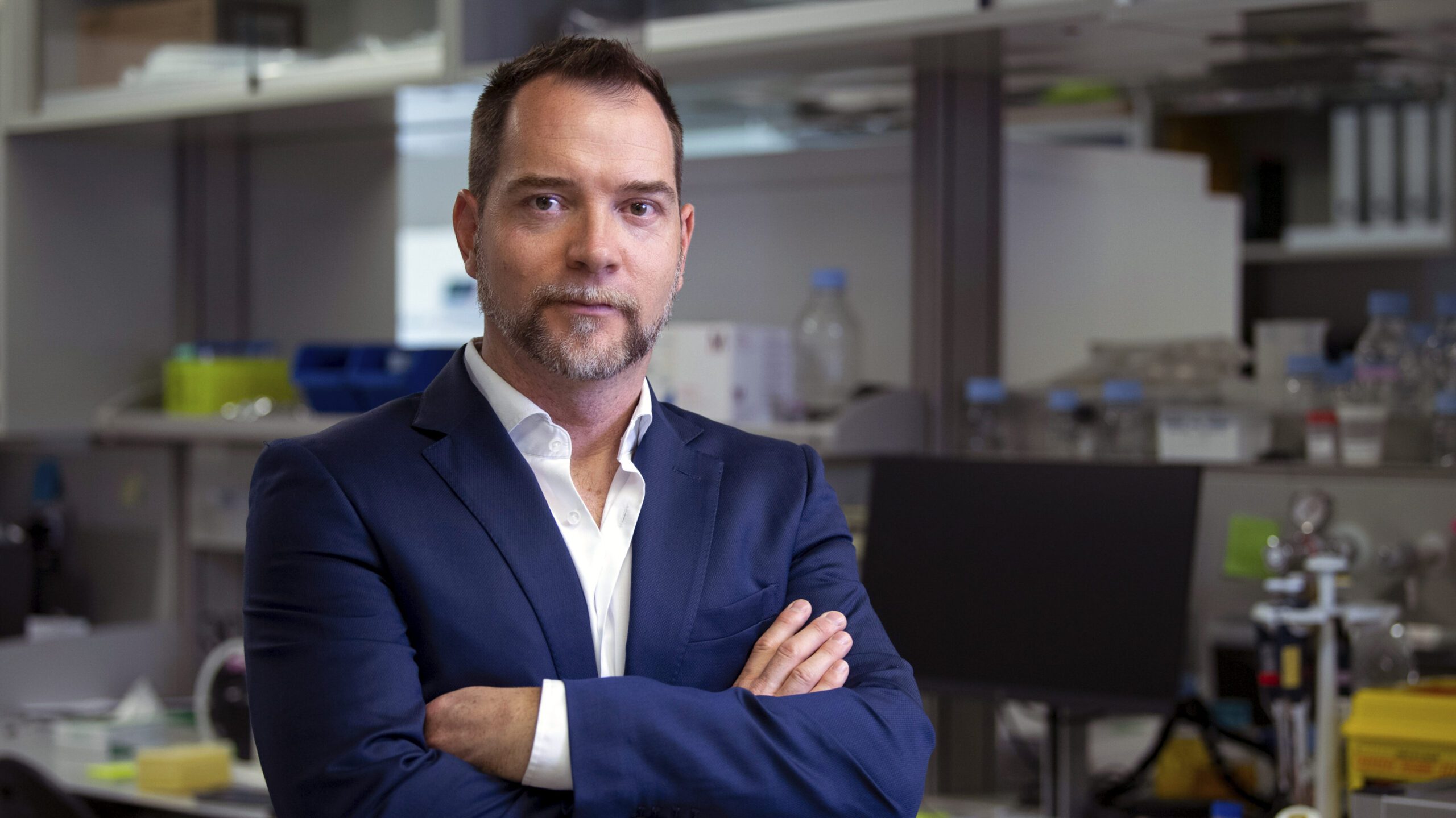Samuel Sánchez has successfully secured an “ERC Proof of Concept” grant, provided by the European Research Council (ERC), to explore the application of his nanorobots in the treatment of mucus-secreting tumors. This prestigious grant enables researchers to assess the feasibility and potential for knowledge transfer of their research projects.

The “MucOncoBots” project has a primary objective of employing nanobots to transport a specialized drug for the treatment of peritoneal pseudomyxoma (PMP). This rare disease is distinguished by the development of tumors that produce a significant quantity of mucus within the peritoneal cavity, making it the most notable type of mucinous tumor known.
Samuel Sánchez, an ICREA Research Professor at IBEC, leads the Smart nano-bio-devices group dedicated to researching and developing nanorobots for biomedical applications. In this project, he collaborates with Meritxell Serra-Casablancas, a PhD student specializing in the development of enzyme-powered nanorobots for cancer treatment, with a specific focus on mucinous tumors. Meritxell will be responsible for the technical advancement of the nanobots and conducting in vitro demonstrations of their therapeutic effects.
This research will be conducted in a close collaboration with the research team of Dr. Héctor G. Palmer, who leads the Stem Cells and Cancer group at the Vall d’Hebron Cancer Research Institute (VHIO). Additionally, the project will benefit from the medical advice and expertise of Dr. Elena Élez, the head of the VHIO Colorectal Cancer group and a medical oncologist at Vall d’Hebron University Hospital (VHUV).
Self-Propelled Nanorobots for Targeted Drug Delivery to Tumor Cells
Mucus serves as a defensive barrier, shielding underlying cells from pathogens and harmful substances. However, this protective role also poses a challenge for drug delivery when administered locally. Hence, a transmucosal drug administration, as proposed in this project, promises to be more efficient. The nanobots will not only act as drug transporters but will also propel themselves towards their target, surmounting the mucus barrier along the way.
The development of this novel therapy with mucolytic capability and improved drug administration efficacy could have a positive impact, not only in treating peritoneal pseudomyxoma (PMP) but also in addressing other conditions where the mucosal barrier obstructs effective therapeutic intervention. These pathologies include approximately 15% of colorectal tumors and 5% of lung tumors, among others.
Furthermore, this therapy could find applications in treating chronic inflammatory lung diseases, such as chronic obstructive pulmonary disease (COPD) and cystic fibrosis, where the mucus barrier also poses a significant challenge for the effective drug administration.
This project stems from a collaboration between Meritxell Serra-Casablancas, a member of Samuel Sánchez’s team, and a group of researchers from VHIO, along with clinicians from VHUV. This collaboration was initiated during the clinical immersion program for doctoral students, which Meritxell actively participates in. The program is jointly conducted by the Institute of Bioengineering of Catalonia (IBEC) and the College of Physicians of Barcelona (CoMB).
The primary objective of the clinical immersion program is to facilitate connections between IBEC doctoral students and clinical specialists, with the aim of promoting the transfer of research findings into clinical practice.
“The mentoring program proposed by the CoMB addresses a fundamental need in medicine, which is the development of multidisciplinary research fostering close collaboration between clinicians and basic researchers. This approach ensures that their efforts are focused on addressing relevant questions for patients and tackling unresolved medical needs,” explains Dr. Elena Élez. “In this specific case, it enabled us to reevaluate a brilliant project initially designed for a different type of tumor, realizing its potential applicability to peritoneal pseudomyxoma, another distinct tumor type. Initiatives like these enhance the efficiency of early-stage research in both fields, combining technology and medicine in this instance.”





